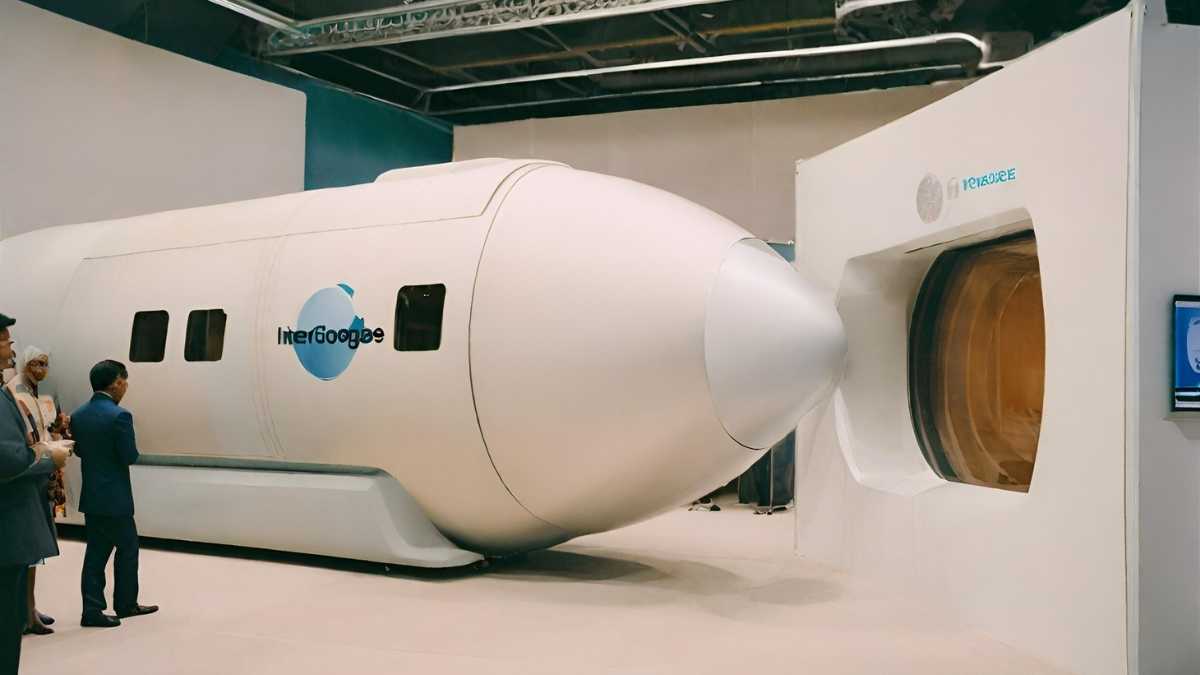New technologies develop at an accelerating pace, often exponentially. This rapid evolution can occur within months or a few years.
The speed at which new technologies evolve is breathtaking, shaping the way we live and work. Innovations that took decades to permeate society now achieve widespread adoption in mere years. As digital infrastructure and global connectivity improve, ideas and advancements spread swiftly across the globe.
Businesses and consumers alike are constantly adapting to the latest technological trends, from artificial intelligence to renewable energy solutions. This creates a dynamic environment where staying informed and agile is crucial for success. Embracing the whirlwind of technological progress requires an understanding of both its pace and its impact on various industries.
The Race Of Innovation

The pace at which new technologies develop today is unprecedented. Innovation races ahead, sometimes quicker than society can adapt. This surge in technological advancements has created a fascinating landscape for us to explore. Let’s delve into the journey of how today’s inventions become tomorrow’s everyday tools.
From Historical Inventions To Modern Marvels
Human history is a timeline dotted with breakthroughs. From the wheel to the World Wide Web, each invention revolutionized society in its era. But the speed of modern innovation eclipses all that came before. A comparison of timelines shows the stark acceleration:
| Historical Invention | Years to Next Leap |
|---|---|
| Printing Press (1440) | 350+ |
| Steam Engine (1712) | 150+ |
| Telephone (1876) | Less than 100 |
| Internet (1983) | Less than 20 |
Today, breakthroughs seem to emerge yearly, shortening the path from imagination to reality.
Key Drivers Accelerating Technological Progress
A number of factors fuel the rapid pace of innovation we see today. Here are the key drivers:
- Computing Power: Continuous breakthroughs in processing speeds and data storage allow for more complex systems.
- Global Connectivity: The internet enables instant communication and collaboration across continents.
- Investment and Funding: A rise in both private and public funding has increased resources for research and development.
- Education and Talent: Better access to education has expanded the pool of skilled professionals in tech fields.
- Consumer Demand: A market hungry for advancements pushes companies to innovate faster.
Together, these drivers ensure that the pace of technological progress won’t be slowing down anytime soon.
Measuring Technological Advancement

Understanding the speed of tech growth is vital. It shows how our world can change.
Benchmarks And Metrics
Benchmarks guide us in tracking tech progress. They provide clear signs of where tech is headed. Metrics offer numbers to compare different tech advancements.
- Patent filings show innovation levels.
- Research and Development (R&D) spending reflects commitment to growth.
- Technology adoption rates reveal how fast new tech reaches people.
Comparing Past And Present Development Rates
Looking at yesterday and today shows us tech’s speed. Here’s a simple view:
| Time Period | Innovation | Time to Adopt |
|---|---|---|
| 1900s | Telephone | 75+ years |
| 2000s | Smartphones | Less than 10 years |
This table shows how tech speeds up over time. Today’s inventions spread faster than ever before.
Sectors Where Technology Moves Fast

Some sectors see technology zoom ahead like a sprinter on race day. These areas stand out for their rapid evolution. They transform lives and industries at a breakneck pace. Let’s delve into these sectors and explore how they embody the spirit of innovation.
Information Technology: A Speedy Giant
Information Technology (IT) is a whirlwind of progress. In this digital age, IT evolves with each tick of the clock. Think about how far we’ve come. From room-sized computers to gadgets that fit in the palm of our hand, it’s a sector where change is constant and swift. Key areas include:
- Software development – New apps and updates roll out daily.
- Hardware – Advances bring more power in smaller devices.
- Cybersecurity – With threats ever-changing, security tech advances rapidly.
Biotechnology And The Leap Forward
The biotech sector is always on the move, outracing even our wildest expectations. Its aim? To solve some of humankind’s biggest health challenges. The industry’s speed is clear as we witness:
- Giant strides in genetic engineering.
- Breakthroughs in drug development.
- Revolutionizing health with personalized medicine.
The Quick Pace Of Renewable Energy Innovations
Renewable energy is a hotbed of rapid innovation. From combating climate change to offering sustainable options, this sector is not just quick; it’s transformative. Noteworthy progress includes:
- Solar power – Efficiency in solar panels improves yearly.
- Wind energy – Turbine design leaps forward, harnessing more wind at lower costs.
- Battery storage – Innovations in storage technology ensure energy’s ready whenever it’s needed.
Impact Of Rapid Tech Development On Society

The breakneck speed at which new technologies emerge can feel dizzying. Society often races to catch up with the latest advancements that reshape our daily lives. Understanding the Impact of Rapid Tech Development on Society takes on new significance as this evolution shows no signs of slowing down. Let’s delve into how this phenomenon transforms our jobs, education, and moral landscape.
Job Market Evolution
The job market continuously adapts to new technologies, often at an unprecedented pace. Automation and AI, for instance, have revolutionized certain industries, leading to the creation of new roles while making others obsolete. This shift demands workers to develop fresh skills, often in areas like data analysis and technology management.
- Increased demand for tech-savvy professionals
- Emergence of remote work, enabled by digital tools
- Job displacement in sectors affected by automation
Many find themselves steering their careers toward technology-infused pathways for sustained employability.
Adaptation In Education
Educational institutions scramble to prepare students for this tech-driven world. Curricula are evolving to include coding, digital literacy, and critical thinking skills from an early age. Lifelong learning is no longer a choice but a necessity for keeping pace with technological progress.
- Integration of technology in classrooms
- Focus on STEM fields to drive innovation
- Online learning platforms multiply, offering flexible education options
Ethical Considerations And Societal Shifts
The speed of technological development presses us to consider its ethical implications. Issues such as data privacy, surveillance, and AI ethics take center stage. Public discourse and policy initiatives attempt to steer the tech landscape toward a more equitable and safe future for all.
Notable shifts confronting society include:
- Debate on technology’s role in privacy and personal freedom
- Regulation challenges as technology outpaces lawmaking
- Greater inclusion in technology design to avoid biases
Keeping Pace With Change
The pace of technological innovation is dizzying. With each new advance, the previous becomes history. Keeping up requires agility and foresight. In a world where the next big thing could be just around the corner, staying ahead is not just optional; it’s necessary.
Strategies For Individuals And Businesses
Adaptability is key in our fast-moving tech landscape. Individuals and businesses must be ready to embrace new tools and processes swiftly.
- Continuous Learning: Commit to ongoing education. This could mean online courses or workshops.
- Networking: Stay connected with industry experts.
- Invest in Technology: Allocate resources to purchase or subscribe to the latest software and tools.
- Innovation Culture: Encourage a workplace that seeks out and values new ideas.
Governments And Policy Making For The Future
Governments play a crucial role in shaping how we integrate new technologies. Regulation and policy must both stimulate innovation and address potential challenges.
- Research and Development Support: Boost initiatives that fund technological advancements.
- Educational Reform: Prepare the next generation with skills for a high-tech economy.
- Infrastructure Investments: Build the physical and digital foundations for tech growth.
- International Collaboration: Partner with other nations to set global tech standards.

Credit: www.gainsight.com
Predicting The Future Of Technological Pace
Technology races forward at an unprecedented speed. New breakthroughs appear daily, shaping tomorrow’s world. To predict the technological pace, we must peek through the lenses of experts and data trends. Let’s explore what may lie ahead in the realm of digital evolution.
Expert Opinions And Trend Analysis
Experts peer into technology’s crystal ball, analyzing patterns and data. They spot signs of progress and innovation. Their insights reveal potential shifts in tech’s trajectory. Understanding their views helps us grasp technology’s tempo.
- AI Developments: Rapid advancements suggest a tech boom.
- Quantum Computing: Experts predict big leaps soon.
- 5G Networks: Fast connectivity could transform tech.
These observations, blended with current trends, indicate a surge in technological capabilities. Still, the journey is complex and full of surprises.
Potential For A Technological Plateau
Sometimes, tech hits a wall. Progress levels off. This plateau can be temporary or signal a slowdown. Various factors contribute to this, sparking debates among tech enthusiasts.
| Reason | Impact |
|---|---|
| Resource Limits | Slows down invention |
| Regulatory Hurdles | Delays implementation |
| Market Saturation | Reduces innovation need |
Knowing these factors, we consider their effects on technological growth. Can society adapt and overcome these limitations, or will innovation face a persistent slowdown? Time and further analysis will tell.
Frequently Asked Questions Of How Quickly Do New Technologies Develop
How Fast Technology Is Developing?
Technology is advancing rapidly, with significant breakthroughs often happening yearly. The pace is so swift that what’s cutting-edge today might become outdated within a few years.
How Fast Is Innovation Happening?
Innovation is advancing rapidly, driven by technological breakthroughs and global interconnectedness, with changes unfolding on a near-daily basis.
How Fast Is The Tech Industry Changing?
The tech industry evolves rapidly, with significant advancements emerging annually. New technologies and trends can shift the landscape within months, requiring constant adaptation.
How Quickly Do You Adopt A New Technology?
We embrace new technologies swiftly, constantly updating our skills to ensure relevance and improved user experience. Our adaptive approach ensures quick integration and deployment of the latest advancements.
Conclusion
Technological advancement races ahead at an unprecedented pace. Staying informed is not just a choice but a necessity in this ever-evolving landscape. This blog has traversed the trajectory of innovation, illuminating the lightning speed at which new technologies emerge. As we adapt and grow, so too will the remarkable inventions that redefine our lives.
Embrace the change, and be prepared to witness the astonishing progress yet to come.



